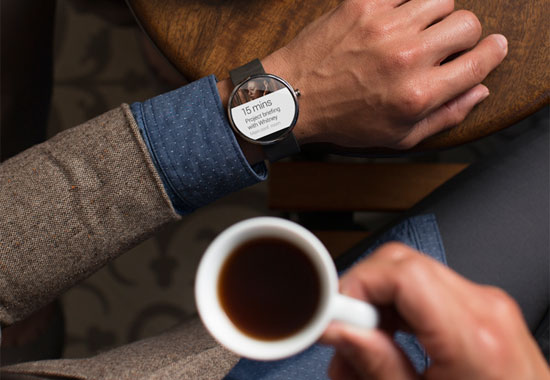Photos and specs of the forthcoming Moto 360 smartwatch from Motorola appeared briefly on a Best Buy Web page this week, sparking increased chatter about the device.
Concerns about price — the watch was listed at US$250 on the page — tempered the usual gasps of delight from geeks. Amazon lists a Samsung Galaxy Gear for $150, a Gear Live for $180, a Gear 2 Neo for $200, a Pebble Steel for $230, and an LG G Black Titan for $233.
This raises the question: Given that Android device users are notoriously less willing to spend money than their iOS counterparts, who will purchase the Moto 360? And will it sell enough to be profitable?

“The pricing is not out of bounds,” Tom Mainelli, a program vice president at IDC, told TechNewsWorld.
“It’s clearly a well-designed device, and it doesn’t have the sort of square display that the first round devices have,” he pointed out. “A square display makes the most of the limited real estate you have, but that makes it feel more like a geek’s watch — and, in that regard, the Moto 360 is unique. Clearly, they’ve put a lot of thought into the design.
What the Moto 360 Offers
The Moto 360 was listed on Best Buy as having a 1.5-inch backlit LCD touchscreen with 390 x 290 pixel resolution of 250 ppi.
The screen is made of Gorilla Glass 3.
It is water resistant in up to 3.3 feet of water for up to 30 minutes. It has an ambient light sensor, WiFi connectivity, 512 MB of RAM and an ambient light sensor.
The Moto 360 is compatible with most devices running Android 4.3 or later. It supports Bluetooth 4.0, enables wireless syncing, has a built-in optical heart rate monitor and a built-in pedometer, is voice activated, and has a vibration alert.
It has a stainless steel case and a plastic case back.
The Moto 360 runs on a built-in Li-ion battery pack and has a battery-strength indicator.
Users swipe up a block at the base of the screen to see messages.
“From a technical standpoint, [the] Moto 360 appears to be on par with other devices running Android Wear that came before,” Ryan Martin, an analyst at 451 Research, told TechNewsWorld.
“The common thread of Android Wear should allow potential customers to focus just as much on the physical aspects of the device as on the OS itself,” he observed.
Deconstructing the Smartwatch
“The block at the bottom is not viewable,” Mainelli pointed out. Motorola “might be selling it that way — this is where you know to put your finger to swipe up — but I think it breaks the elegance of the design a bit.”
Another problem is that like Android devices in general, the Moto 360 “buzzes nonstop,” he noted. “How does this device learn when I don’t want to be disturbed?”
Despite those shortcomings, Mainelli’s thumb is at least sideways, if not up.
“Apple is likely to get this thing correct right out of the gate,” he said, but “from the design and wearability perspective, the Moto 360 is the best-looking Android watch we’ve seen yet.”
Still, a lot of hopes for smartwatches to catch on with consumers are pinned on Apple, which hasn’t launched anything yet.
“When they do,” said Mainelli, “it will add legitimacy to the category. Apple does design really well.”
Talk to the Watch
The Moto 360’s voice control might be a major plus.
“There’s a big emphasis on voice control functions through wearable devices running Android Wear,” 451’s Martin said. “For the wearable tech market as a whole, it will be important to track the degree to which end users are taking advantage of such channels to interact with the devices.”
However, device makers “still haven’t made it clear whether they ultimately intend wrist-based wearables to be used as output rather than input devices,” he pointed out, “although I think a winning strategy will center on tapping into a combination of the two.”























































